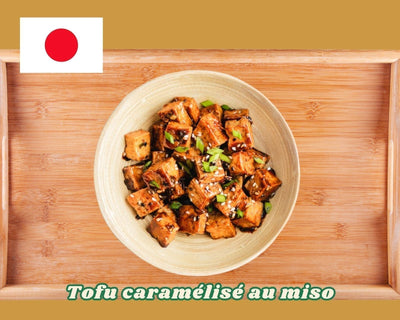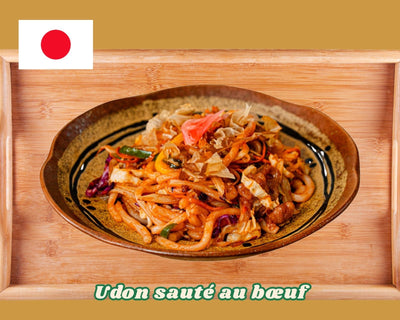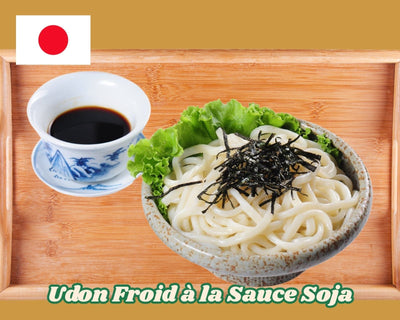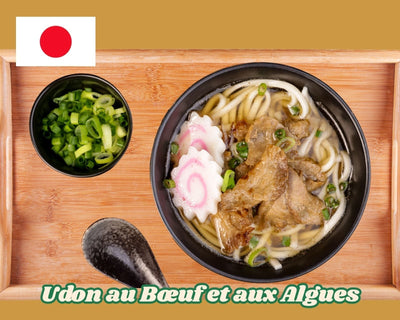HOMEMADE RECIPES result Cuisine Japonaise

Ramen au curry japonais : riche, parfumé et réconfortant
Un bol de ramen au curry japonais généreux, plein d’arômes et de douceur — le plat parfait pour se réchauffer pendant les journées fraîches.
Cette recette marie un bouillon de curry japonais, du porc sauté, des champignons shiitake et enoki, un œuf mollet et des nouilles ramen fondantes.
Un vrai plat de confort, typiquement japonais ! 🇯🇵

Tofu caramélisé au miso : recette japonaise facile et savour...
Découvrez une recette japonaise douce et parfumée : le tofu caramélisé au miso !
Des cubes de tofu dorés à la poêle, nappés d’une sauce umami au miso, au miel et au gingembre. Une texture fondante à l’intérieur, croustillante à l’extérieur – parfaite pour accompagner un bol de riz chaud.
Ce plat végétarien équilibré et réconfortant est idéal pour un dîner léger ou pour découvrir la richesse des saveurs japonaises à la maison.
Suivez Hello Asia pour apprendre comment préparer facilement ce tofu au miso authentique, comme au Japon !

Udon sauté au bœuf – Recette japonaise savoureuse et facile
Les nouilles udon sautées au bœuf sont un plat japonais apprécié dans le monde entier grâce à l’harmonie parfaite entre les nouilles udon épaisses et moelleuses, le bœuf tendre et savoureux, et les légumes croquants. La sauce soja, la sauce sautée et l’ail doré apportent une profondeur de goût qui rend ce plat à la fois original et irrésistible. C’est un choix idéal pour varier les repas en famille, particulièrement adapté pour un déjeuner rapide ou un dîner léger mais toujours équilibré et nutritif.

Yakitori skewers with teriyaki sauce – Quick and easy
Juicy skewers coated in a sweet and savory sauce: welcome to the delicious world of Japanese Yakitori! A simple yet essential recipe, perfect as a starter or with white rice. Follow Hello Asia to make this iconic recipe at home!

Cold Udon with Soy Sauce – Vegetarian, Refreshing, Ultra Simple
Cold Udon without Dashi — A Japanese vegetarian recipe perfect for summer! Fresh, light, and customizable, this cold udon recipe with soy sauce is a tasty alternative to hot dishes. Without dashi broth, it's suitable for vegetarian diets and showcases the simplicity of Japanese flavors.

Beef and Seaweed Udon – Easy Japanese Flavor at Home
Beef and seaweed udon is a signature dish in Japanese cuisine, renowned for its naturally sweet, clear broth and the tender, fragrant texture of the beef. It's a simple recipe to make at home, with ingredients easily found on HelloAsia.ch, perfect for the whole family.